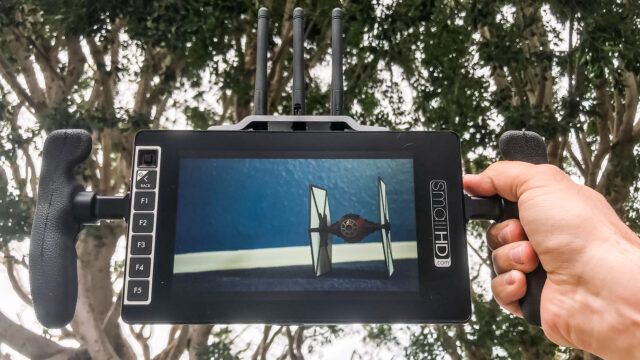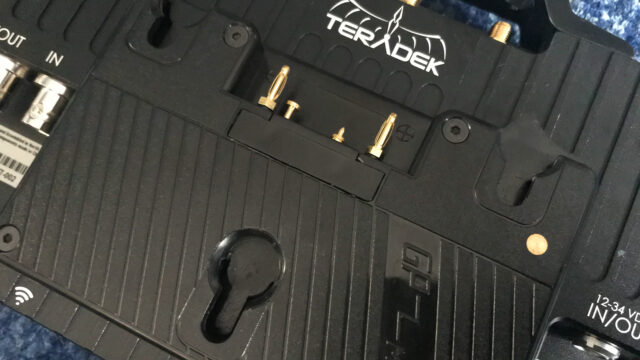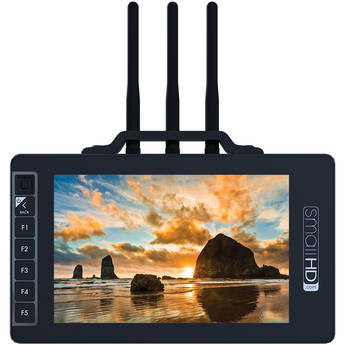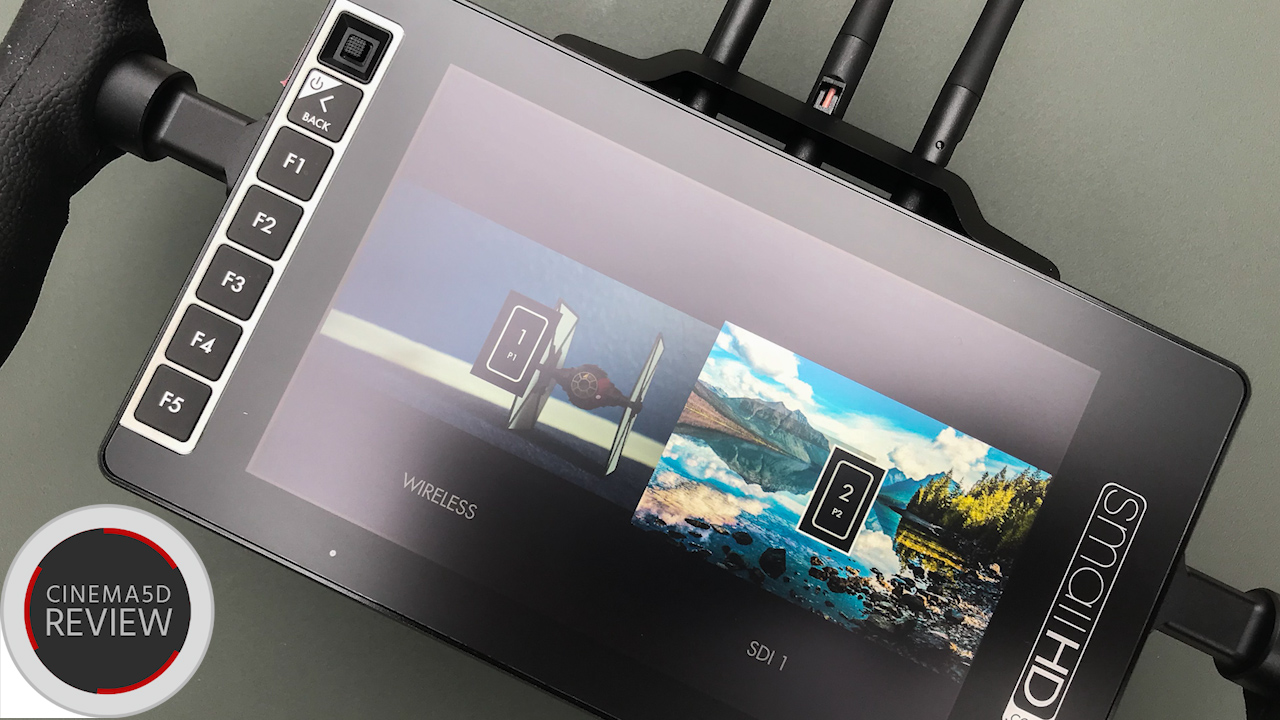
The Teradek and SmallHD 703 Bolt promises to be the ideal mobile set monitor with a built-in Sidekick II wireless receiver – a true all-in-one solution. But does it hold up in the field? Let’s find out.
Introduction:
Wireless director/AC monitors are usually unwieldy and heavy monsters. The handles are perpetually loose and the moment you need your off-brand wireless signal to be steady you get a flickery mess. Thus my excitement at the announcement of the Teradek and SmallHD 703 Bolt monitor coming to market. The collaboration between wireless favorite Teradek and inimitable SmallHD’s gorgeous & reliable on-set monitors seems like a no brainer.
I took this wireless lovechild into the middle of the woods in North Carolina to put it to the test on a fully loaded three day digital commercial shoot working with Canon C300 MK II’s and a RED Weapon (rigged on a Movi Pro). Over the three days the temperature swung from 10 degrees Fahrenheit to rainy 70 degree weather with significant humidity… and the monitor never even hesitated to perform at top marks.
Unless you are David Fincher, it’s tricky to get brands to work together to truly enhance one another’s product offerings, but thanks to Vitec Group first purchasing Teradek in 2011 and then SmallHD in 2014, we finally are able to get our hands on a monitor with a built-in wireless receiver able to accept a signal from a Teradek Bolt 500, 1000 or the ultimate 3000 transmitter. For this review I used the Teradek Bolt 3000 transmitter and a Bolt 500 transmitter and receiver kit.
Let’s get one thing straight here: if you like Small HD’s 703 Ultrabright monitor, and you like Teradek’s reliable wireless video, then you are going to like the Bolt 703. Why? Because, well, everything is just a little bit easier. All the tools you know and love are here, such as peaking, focus assist, waveform and in-monitor image capture with the added benefit of being able to cycle to a wireless input in the menu called simply “TX.”
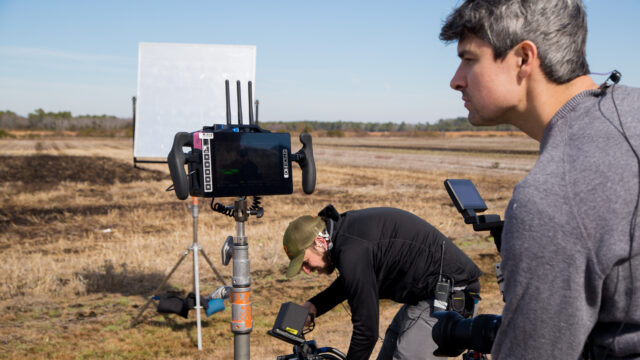
Image Credit: Amanda Young
Cost:
Time to break down the numbers: the cost for the SmallHD 703 Ultrabright is currently listed for $2,999.00 on B&H. The Sidekick II receiver (integrated into the Teradek and SmallHD 703 monitor) is listed for $2190.00. If you buy each of these separately you’ll get a cost of $5189.00 and that doesn’t include a battery plate or handles. In short, buying the Teradek and SmallHD 703 Bolt will set you back $4,199.00, but it will save you almost a grand versus buying a receiver and monitor separately. Don’t forget you’ll also need to purchase at least a Bolt 500 to transmit to the monitor if you don’t have one already, but with wireless video an absolutely necessary tool on set these days, you’ll want to have a Bolt in your kit. The monitor receiver is rated at up to 300 ft, so keep that in mind when choosing the right transmitter for your purposes.
Now this isn’t the most affordable portable monitor on the market, but you get what you pay for in terms of build quality and ease of use. The LCD screen itself is gorilla glass and the monitor housing is made from milled aluminum. Everything feels to the touch like it can take a drop or five hundred, but I didn’t want to test that theory for this review. The three antennae at the top of the monitor are made from plastic and don’t feel like they’d hold up quite as well in the field, but thankfully a broken antenna is much easier and cheaper to replace than an LCD screen. It might be worth picking up a backup antenna if you do decide to add this monitor to your kit.
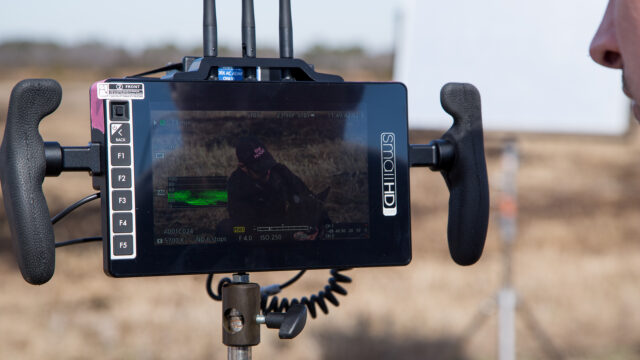
Image Credit: Amanda Young
Manu:
Navigating the menu is intuitive, especially if you’ve used any SmallHD products over the years. Want to take two inputs from two Bolt transmitters and see them both on the monitor at the same time? Easy. Scroll over to the “Multi” screen and select one image square as TX and toggle the other image square over to the SDI input of your choice. Provided you have everything set on the transmitter end you’ll get a signal immediately. Pairing the Bolt 3000 and 500 was painless and took just seconds. The video signal remained clear the entire shoot and we had zero drop outs.
It is worth emphasizing that the Sidekick II is not an integrated dual receiver and you’ll need to add another receiver to use the split-screen multi-function. This is a little disappointing because it means breaking up what truly is a beautifully streamlined package by adding another receiver to the many 1/4 20 mounting points on the monitor housing. Not a deal breaker by any means, but having a dual receiver in a small 7-inch monitor package would be amazing for future generations.
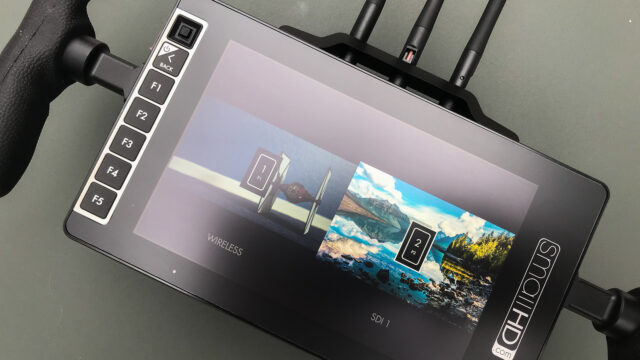
Multi mode in action. Attach a receiver to the SDI 1 input and you are off to the races. Image Credit: Graham Sheldon
Features:
One of my favorite features from SmallHD monitors is the ability to have multiple users map their favorite settings to a user profile and scroll between them with ease. Your AC might need all of their focus tools, but as a DP you might want to emphasize waveform and other exposure tools — it is seemless to navigate between each of your unique profiles.
The monitor is bright, really bright… ultra bright? When you turn the brightness up to 100 you’ll have no trouble pulling focus in direct sunlight in the middle of the day. The 3000 nit brightness is a major selling point for me and I didn’t get any of those nasty reflections that some monitors are prone to in direct sunlight.
For input ports, you have a single SDI in and a single SDI out and no HDMI, which is a change from the SmallHD 703 Ultrabright. I personally try to avoid finicky HDMI cables wherever possible, so lacking HDMI isn’t a huge hurdle for me. You can also power the monitor from the wall or generator through a 12-34 Volt power port, but that defeats the point of having such a mobile package.
The rubberized handles are fantastic and changing the handle angle is quick, but does require an allen key. I would have liked to have seen a button release system to change the handle angle, but I was fine with the handle position and never felt the need to change it.
You can power the monitor through V-mount or Gold Mount plates and I found leaving an Anton Bauer CINE 90 battery on the monitor meant I had power for nearly the entire shooting day. I recall we had to change out batteries once at about the 7 hour mark each day, but that was hardly a scientific test of battery life. In short, the monitor has a low power draw and lasts a long time.
Conclusion:
Brand collaboration is the best kind of innovation. Camera bodies should have integrated wireless transmitters, just like they have internal NDs or XLR inputs. Add your receiver inside your monitor and you have fewer failure points – fewer SDI cables to break or pins to bend.
The flip-side of this argument is that by integrating a receiver into a monitor you are giving the owner less choice to customize hardware or to upgrade the monitor while keeping the same receiver. But, how many times will you really need to upgrade your external monitor? Unlike your camera sensor, I would argue that the Teradek and SmallHD 703 gives you a package that will serve all your monitor needs for the foreseeable future.
The Teradek and SmallHD 703 Bolt monitor is a sign of a collaborative future, and it’s a sign that I like.
What do you think? Will you be adding the Teradek and SmallHD 703 Bolt monitor to your kit? Comment below!
